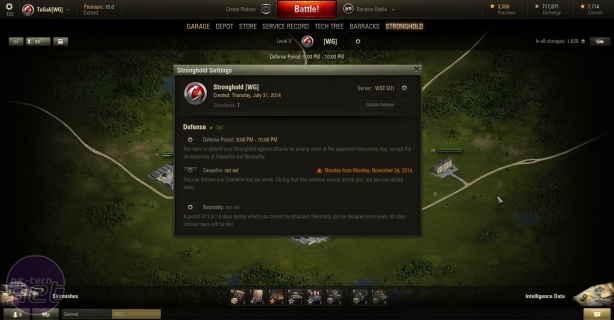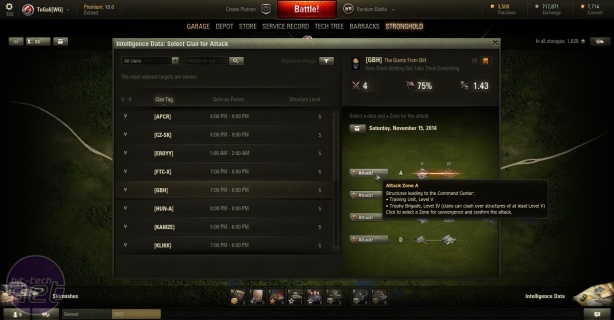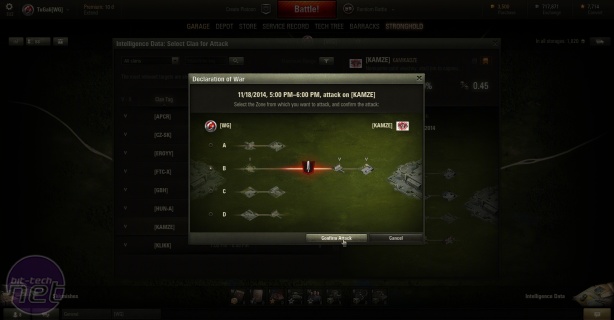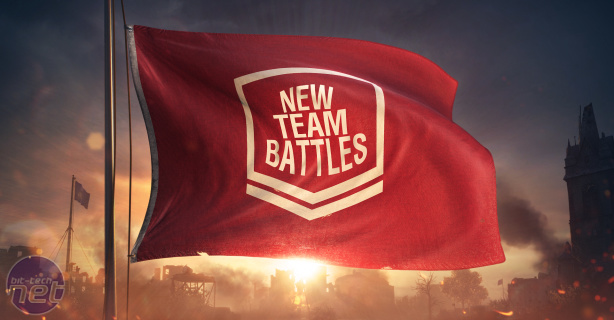Gearing Up for Esports: World of Tanks Strongholds
December 4, 2014 | 13:27
Companies: #esports #wargaming

World of Tanks Strongholds: Attack and Defend
While Skirmishes are a fun and relatively risk-free way for clans to practice and earn Industrial Resource, the real clan warfare within Strongholds takes place in attack and defend battles, which were added in 9.4 in conjunction with lifting the stronghold level cap from 4 to 10. As soon as a clan with 20 or more members upgrades the command centre to level 5, the stronghold is open to direct attack from opposing clans, but can also launch attacks of its own on the strongholds of other clans.Unlike Skirmishes, attack and defence battles do not happen randomly. When upgrading to level 5, it's the Commander's responsibility to set a defence period, which is one hour every day during which the clan's stronghold can be attacked. There's also a ceasefire option, which gives clans one day off from defending per week. Finally, every 90 days you can set a neutrality period of 3-14 days to give everyone some time off – it must be a single continuous period and unused days do not stack up. As such, it's a clear step up from level 4, and requires constant commitment from clan members, just as any professional clan would. If it's not working out, you can disable defence entirely, but in doing so you'll have to roll back to level 4, and everything invested since moving up will be lost.
Enemy clans can attack your stronghold only within your designated defence period, and likewise your clan can plan attacks on others during theirs. Clans are easily searched for, and the Intelligence Data window will reveal statistics like number of battles fought, win ratio and highest structure level. You then choose which zone within a stronghold you'd like to attack, and which of your zones you'll be attacking from – you can launch as many attacks per day as you have zones (i.e. maximum four per day). Attacks can be declared up to seven days in advance, but cannot be cancelled after – a calendar gives clan members access to the attack schedule. You're also only allowed to attack any given clan once per week.
Attack and defence battles are standard rule 15 v 15 matches with no tank tier limit and a ten minute time limit – the reasoning behind training lower tier clan members up through smaller and more restricted Skirmish battles is clear. The first battle takes place at the first applicable structure of the defending team's zone – construction sites, structures that are not at 100 percent durability and structures that are below level 5 are skipped. The structure in question decides the map, which is assigned at random and changes every 14 days.
If the attacking team is successful, they temporarily capture the structure and a new battle is fought for the next in line, with clans having a maximum of five minutes to prepare for the next battle. However, if the match ends in a draw or the attacking team loses, the defenders keep their structure. Not only this, they then launch a counter attack in the next battle, fighting to either regain a previously lost structure or attacking one in the enemy's zone. This continues until either team's Command Centre is captured or until the defending period expires or is less than 20 minutes away, in which case the current battle will end and no more will start.
The Industrial Resource plunder earned by the victors depends on the captured structures but is always more than can be earned in a single Skirmish. The winners steal 20 percent of the maximum durability from each defeated structure (so higher level buildings are of course more valuable); this is taken first from the structure's Industrial Resource storage pool and then from the durability if the storage is emptied. Structures with less than full durability can no longer use their reserves or participate in battles, and if the Command Centre loses durability all reserves are disabled. Also, this pillaging is only calculated at the battle's end, so temporary captures have no impact on it. The total Industrial Resource plunder is then distributed between anyone who fought in any battle proportionate to their combat experience.
As stated, Wargaming's goal with Strongholds is to bring players together and motivate them to spend more time working as a team, communicating and polishing strategies, with the hope of increasing player lifetime and the number of World of Tanks esports players. Of course, not every Strongholds player will become an esports champion, but the idea of increasing the pool of potential esports players is valid and makes sense in the world of multi-million dollar prize tournaments. It's designed to act as a stepping stone between regular play and high-level Global Map clan play, which can currently seem daunting for those not already there.
Finally, it's also worth mentioning the recently updated Team Battle mode, the mode of choice for World of Tanks esports tournaments. Team Battle has been switched from standard to Assault Mode, in which a team first has two attempts to attack and capture from the enemy two capture points on the map, before having two attempts to defend these same points. Draws are no longer possible, as a tie breaker will decide the winner if necessary. Rounds have been reduced from ten to seven minutes, and the seven man teams can now only be formed with either five Tier VIII tanks and two Tier VII tanks, or six Tier VIII tanks and one Tier VI. The aim is to eliminate camping and low tier scout tanks so as to keep the battles fast, action-intense and more interesting overall. After all, the key thing about esports is making it interesting for viewers (and commentators). This video helps make this clearer too.
Whether or not Strongholds will help Wargaming achieve its aim of being a top five esport remains to be seen, but the changes it and the new Team Battle mode implement certainly make a lot of sense on the surface. Are you a World of Tanks player yourself? If so, be sure to let us know your thoughts on it and any experiences you've had so far.

MSI MPG Velox 100R Chassis Review
October 14 2021 | 15:04













Want to comment? Please log in.